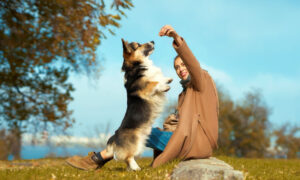Protection dogs have become an increasingly popular choice for those seeking added security at home or while traveling. A well-trained protection dog provides more than just companionship; they offer a level of security that is unmatched by traditional security systems.
In this article, we’ll explore the importance of protection dogs, the benefits they offer, and how to choose the right one to meet your security needs.
What Are Protection Dogs?
Protection dogs are specifically trained canines that can detect and respond to threats. These dogs are not just pets; they serve as guardians, trained to protect their owners and their homes from various dangers.
They can be trained to act against intruders, provide personal protection, and offer peace of mind in dangerous situations. Many breeds, including German Shepherds, Belgian Malinois, and Doberman Pinschers, are commonly chosen for protection work due to their intelligence, strength, and protective instincts.
Unlike a home security system, a protection dog can physically intervene if necessary, offering a level of security that cannot be bypassed or deactivated.
The Benefits of Owning a Protection Dog
Protection dogs offer numerous advantages that go beyond simple security. Here are some key benefits of having a protection dog:
1. Physical Protection
A protection dog’s primary role is to safeguard its owner and property. They are trained to detect threats, whether it be an intruder or a potential attacker, and respond quickly. Their presence can act as a deterrent to criminals who would otherwise consider targeting your home or business.
2. Loyal Companionship
In addition to their protective capabilities, protection dogs are loyal and affectionate companions. They bond closely with their owners and can provide emotional support, particularly during stressful situations. Their loyalty and affection make them excellent family members who are always looking out for their loved ones.
3. 24/7 Security
A protection dog provides round-the-clock security, something a traditional security system cannot offer. While cameras and alarms can notify you of a potential threat, a protection dog can take immediate action, physically protecting you and your loved ones.
4. Versatile Use
Protection dogs can serve a variety of roles, from guarding homes to offering personal protection during travel. They are versatile and can adapt to different environments, making them ideal for people with diverse security needs.
How Protection Dogs Are Trained
Training a protection dog is a complex and specialized process. Professional trainers work with the dog to instill specific behaviors that will ensure the dog can protect its owner effectively. Here’s an overview of how protection dogs are trained:
1. Obedience Training
The foundation of protection training is obedience. A protection dog must first learn basic commands such as sit, stay, come, and heel. Without obedience, a protection dog cannot be controlled in high-stress situations, which is crucial for ensuring safety.
2. Socialization
Protection dogs need to be socialized to ensure they can differentiate between a threat and a non-threat. They are introduced to various people, environments, and situations so that they can remain calm in different settings while being alert to any signs of danger.
3. Aggression Control
Protection dogs are trained to have controlled aggression. They need to respond to threats with the appropriate level of intensity. A well-trained protection dog should not be overly aggressive or vicious without cause, but they should be able to neutralize a threat when necessary.
4. Advanced Protection Techniques
Once the dog has mastered obedience and socialization, they are trained in specific protection techniques, including guarding, bite work, and threat neutralization. This training ensures the dog can act quickly and decisively when faced with a potential threat.
Selecting the Right Protection Dog
Choosing the right protection dog for your needs is crucial. Not all dogs are suited for protection work, so it’s important to consider various factors when making your decision.
1. Breed Selection
Certain dog breeds are more suited for protection work than others. Breeds like the German Shepherd, Belgian Malinois, Doberman Pinscher, and Rottweiler are commonly chosen due to their intelligence, strength, and natural protective instincts. It’s important to select a breed that matches your specific needs.
2. Age and Health
The age and health of the protection dog are important factors to consider. While younger dogs may be more trainable, adult dogs that have already undergone professional training may offer immediate protection. Always ensure the dog is in excellent health and physically capable of handling protection work.
3. Temperament
A protection dog must have the right temperament to be effective. They should be confident, alert, and responsive to commands. At the same time, they should be calm and well-adjusted in non-threatening situations. Choosing a dog with a balanced temperament ensures they can differentiate between everyday activities and actual threats.
4. Training and Experience
Look for a dog that has undergone professional training from a reputable trainer or protection dog service. A well-trained dog will respond to commands and be able to react appropriately in various situations. It’s essential to know the level of training the dog has received before making your purchase.
How to Integrate a Protection Dog into Your Home
Bringing a protection dog into your home requires careful planning. These dogs are not just security tools; they are family members that need to be integrated into your daily life. Here are a few tips for successfully incorporating a protection dog into your family:
1. Build a Bond with Your Dog
It’s important to establish a strong relationship with your protection dog. Spend time with the dog to develop trust and mutual respect. This bond will ensure the dog is more responsive to you and your commands, especially in stressful situations.
2. Ongoing Training
Even after purchasing a protection dog, it’s important to maintain ongoing training. This helps reinforce obedience, ensures the dog stays sharp, and strengthens the bond between you and the dog. Ongoing training ensures that your dog continues to perform well in protection situations.
3. Establish Boundaries
Protection dogs must understand the boundaries of their role within the family. While they are highly protective, they should also be well-socialized with family members, friends, and other pets. It’s essential to strike a balance between protection and companionship to create a harmonious living environment.
Conclusion
Protection dogs offer unmatched security, loyalty, and companionship. Whether you need a dog for home defense or personal protection, investing in a trained protection dog can significantly enhance your safety. These dogs provide 24/7 protection, are highly adaptable, and offer emotional support in addition to their physical guarding abilities.
When choosing a protection dog, it’s important to select the right breed, assess the dog’s training and temperament, and ensure you’re prepared to invest time in bonding with and training your new companion. With the right protection dog by your side, you can enjoy peace of mind knowing that your family and home are safe.



































